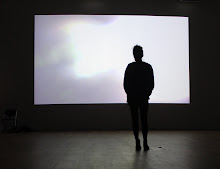'Why do you climb? Sometimes our motivations, which fuel us at the start of a
climbing career, can return to haunt us later on. For example many climbers feel that they are overcoming something or proving something by
climbing, which can be very motivating and empowering initially, but unless you are super talented, there will come a point where you can no longer overcome or prove something simply because you cant climb any harder, and the weight of expectation then becomes an double edged sword.
Clinical psychologists have a long history of working with fears and phobias and there is good research evidence to help you match up specific approaches to specific fears. For example, behavioral approaches such as exposing yourself to the thing that frightens you (eg practising falling off if that's what terrifies you) in incremental stages will help you recondition yourself. However, in practice many people find that going straight into exposure can be too difficult.'
Cognitive behavioral techniques (CBT)- Which aim to tackle unhelpful thoughts and undermine the evidence for them through behavioral experiments, can also be helpful and have been proven successful. For example, perhaps your self talk goes along the lines of “this is hard, this is too hard, I can never do overhangs” etc etc, then the approach would be to gather evidence to the contrary of this, eg record times when you have climbed harder and successfully completed overhangs. You would then spend time practicing more helpful self talk so that you can access this in your anxiety-provoking
climbing situations.
Neurolinguistic programming (NLP)- Which also aims to change unhelpful patterns of thinking, where you may use anchoring techniques in different sensory modalities to replace anxiety with relaxation, eg place a sticker on the back of your hand for you to look at when you feel anxious, which you have previously looked at whilst practicing being relaxed.
Mindfulness techniques- Are essentially meditative, but don't require sitting in a quiet place and chanting. Rather, we allow ourselves to be fully present in the moment, connecting with all our sensory experiences. This can be particularly helpful when
climbing as attention to all elements of the sensory experience can improve performance. For example, noticing areas of tension and relaxation in our body can ensure the right amount of force is used at the right time and place; paying close visual attention to the rock in front of us can help us spot hidden variations which allow for better positioning, and so on.
Extracts taken from UKC Full article available from-
http://www.ukclimbing.com/articles/page.php?id=1127
Next step- To continue with experimental videos based upon the above behavior altering techniques.

















